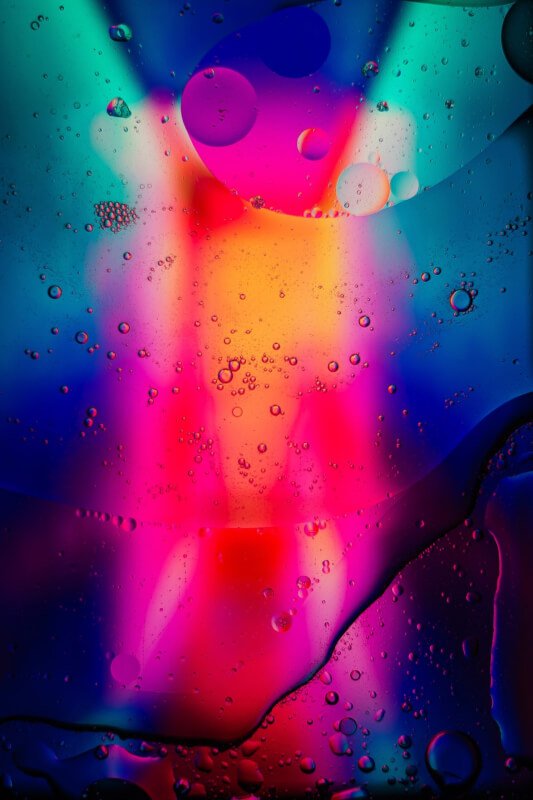Are you puzzled by the lack of color changes in your chameleon? It can be quite disheartening when their vibrant hues remain unchanged, leaving you wondering what might be wrong. In this article, we will explore the possible reasons behind your chameleon’s reluctance to change colors. From environmental factors to health issues, we will delve into the potential causes and provide you with valuable insights to help you better understand and address this puzzling phenomenon. So, let’s embark on this colorful journey together and unlock the secrets behind your chameleon’s static appearance.

Common Reasons Why Chameleons Don’t Change Colors
Stress
Stress is a common reason why chameleons might not change colors. These creatures are sensitive to their environment, and any sudden changes or disturbances can cause them stress. Factors like loud noises, overcrowded cages, frequent handling, or the presence of other pets in the vicinity can cause chameleons to feel anxious and may prevent them from displaying their vibrant colors.
Poor Health
If your chameleon is not in good health, it may not have the energy or resources to change its colors. Illnesses, infections, or nutritional deficiencies can all impact a chameleon’s ability to change its coloration. If you notice any signs of poor health, such as a loss of appetite, weight loss, or changes in their bowel movements, it is essential to seek veterinary advice promptly.
Temperature
Temperature plays a crucial role in a chameleon’s ability to change colors. These reptiles are ectothermic, meaning they rely on external sources to regulate their body temperature. If the temperature is too cold or too hot, it can have an adverse impact on their ability to change colors. Maintaining a suitable temperature range for your chameleon is vital for their overall well-being and color-changing abilities.
Lighting
Proper lighting is essential for chameleons as it affects their color-changing ability. Chameleons require a balance of UVB and UVA light to synthesize Vitamin D3, which is vital for their health. Inadequate or incorrect lighting can disrupt this process and affect their coloration. Ensure that your chameleon’s enclosure has the appropriate lighting setup, including a UVB light source, to support their natural color-changing abilities.
Age
The age of your chameleon can also affect its ability to change colors. Young chameleons may not display vibrant coloration until they reach sexual maturity. It’s important to remember that color-changing is not as prominent in younger chameleons compared to their adult counterparts. As your chameleon grows older, you may notice more significant and noticeable color changes.
Habitat
The habitat provided for your chameleon greatly influences its ability to change colors. A cramped or inadequate enclosure can lead to stress, which we already mentioned is a factor that can prevent color changes. Providing a spacious and enriched environment that mimics their natural habitat is crucial for encouraging color-changing behavior in chameleons.
Genetics
While environmental factors play a significant role, the color-changing abilities of chameleons are also influenced by their genetics. Different species of chameleons have varying abilities to change colors, and some may be naturally more vibrant than others. The genetics of your chameleon can determine the range and intensity of color changes displayed.
Mood
Chameleons can also change their colors based on their mood. If they feel threatened or agitated, they may display darker colors as a warning. Conversely, if they are feeling calm and relaxed, they may exhibit brighter and more vibrant coloration. Understanding your chameleon’s behavior and its corresponding color changes can help you gauge its mood and ensure its well-being.
Camouflage
Chameleons are known for their remarkable camouflage abilities, which allow them to blend seamlessly into their surroundings. In certain situations, they may choose not to change colors as a defense mechanism to remain inconspicuous. If your chameleon feels safe in its environment, it may opt to maintain a static coloration to avoid attracting attention.
Inadequate Diet
Diet plays a crucial role in a chameleon’s overall health and color-changing abilities. If their diet lacks essential nutrients, it can affect their ability to change colors. Providing a varied and nutrient-rich diet is vital for your chameleon’s overall well-being and its vibrant coloration. Consult with a reptile veterinarian or a knowledgeable pet store professional to ensure that you are providing a suitable diet for your chameleon.
How to Determine if Your Chameleon Can Change Colors
Observing Color Changes
One of the easiest ways to determine if your chameleon can change colors is by simply observing them. Spend some time with your chameleon in a tranquil environment and carefully observe its coloration. Notice if it exhibits any changes in response to its surroundings, mood, or temperature. By being patient and observant, you can gain valuable insights into your chameleon’s color-changing abilities.
Seeking Veterinary Advice
If you are concerned about your chameleon’s color-changing abilities, it is always advisable to seek veterinary advice. A reptile veterinarian can examine your chameleon, assess its overall health, and provide guidance on any necessary adjustments to its care. They can also address any potential health issues that might be impacting your chameleon’s ability to change colors.

Tips for Encouraging Color Changes in Chameleons
Provide a Suitable Environment
Creating a suitable environment for your chameleon is crucial for encouraging color changes. Ensure that their enclosure is spacious enough to allow for natural movement and climbing. Incorporate live plants, branches, and hiding spots to create a stimulating and enriching environment that resembles their natural habitat.
Maintain Optimal Temperature and Humidity
Maintaining optimal temperature and humidity levels in your chameleon’s enclosure is vital for their well-being and color-changing abilities. Research the specific requirements of your chameleon species and invest in a high-quality thermometer and hygrometer to monitor these factors accurately. Regularly check and adjust the temperature and humidity levels as needed to provide a comfortable environment for your chameleon.
Adjust Lighting
Proper lighting is essential for chameleons to exhibit their full range of color changes. Ensure that your chameleon’s enclosure has a suitable UVB light source that provides the necessary UVB and UVA wavelengths. Consider using a timer to regulate the photoperiod, mimicking the natural day-night cycle, and ensuring your chameleon receives the appropriate amount of light each day.
Ensure a Nourishing Diet
A healthy and balanced diet is crucial for encouraging color changes in chameleons. Provide a varied diet consisting of gut-loaded insects, such as crickets and roaches, as well as occasional feeder insects like waxworms or silkworms. Supplementation with calcium and other essential vitamins and minerals should also be included to support overall health and coloration.
Minimize Stress Factors
Reducing stress is essential if you want to encourage color changes in your chameleon. Limit handling to essential activities like feeding or health checks and make sure to provide a quiet and tranquil environment for your chameleon to thrive. Avoid sudden loud noises, overcrowding in the enclosure, and interactions with other pets or disturbing stimuli that may cause unnecessary stress.
Habitat Enrichment and Camouflage
Creating a stimulating and enriching environment for your chameleon can encourage natural behaviors, including color changes. Incorporate live plants, branches, and vine-like structures to mimic their natural habitat. This will provide opportunities for climbing and hiding and allow your chameleon to exhibit its natural color-changing behaviors while camouflaging in its environment.
By understanding the common reasons why chameleons don’t change colors and implementing the tips mentioned above, you can help encourage your chameleon to display its stunning and vibrant coloration. Remember to provide a suitable environment, maintain proper temperature and lighting, ensure a nourishing diet, minimize stress factors, and create a habitat that supports natural behaviors and camouflage. If you have any concerns or notice significant changes in your chameleon’s color-changing abilities, always consult with a reptile veterinarian for guidance and support.



